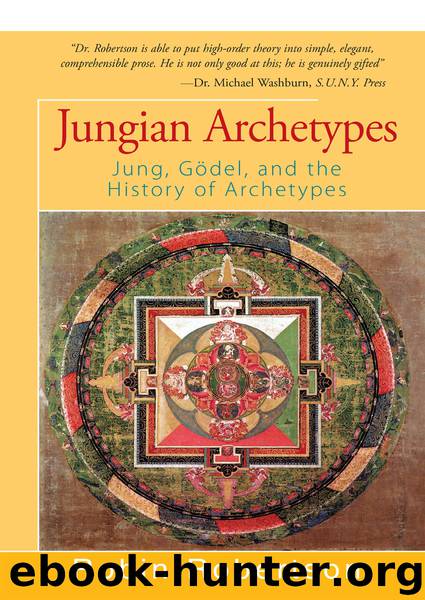Jungian Archetypes by Robin Robertson

Author:Robin Robertson
Language: eng
Format: epub
ISBN: 9781504033770
Publisher: Open Road Distribution
Published: 2016-05-04T16:00:00+00:00
A COMPUTER MODEL OF THE MIND
It is important to recognize that Jung’s patient’s fantasy of the sun’s penis creating the winds was not only collective; it was also purposeful. The patient brought up that material because he wanted to initiate Jung into religious mysteries; thus he somehow tapped into collective material about religious initiation. Just as we are able to access personal memories that fit our needs, such as how to drive a car, what the answer to an exam question is, etc., we also seem able to access collective material when it is needed.
Jung realized that everything emerges into consciousness out of the unconscious. When we call up our memories of how to drive a car, it is not our consciousness that organizes those memories and makes them available; clearly, something in the unconscious is able to organize the memories that are necessary and make them available to our conscious mind. In the example of driving a car, the remembered behaviors may never even reemerge into consciousness; we may drive the car with no conscious awareness that we are doing so. This whole process is a mystery to which we have grown so accustomed that we have come to view it as commonplace.
Behavioral psychology, for example, views behavior as a simple response to stimulus. They use the model of a reflex-arc, assuming that a stimulus leads immediately to a response. This model ignores the essential creativity that takes place in everyday life because it places all behavior at the same level; behavioral psychology sees no need for hierarchies of behavior. Some examples that may show the complexity of the real-life situation follow.
For example, the part of our psyche that organizes and presents us with all the memories, psychic and muscular, needed to drive an auto, has to be on a higher level than the memories themselves. That is, there has to be something that organizes those memories; such an organizer is inherently at a different level of psychic organization than the memories it organizes. The unconscious is thus less a static repository of personal and collective material than an active organizational entity which serves and even anticipates the needs of consciousness.
As long as we don’t get too enamored with the analogy, it is useful to draw a parallel between the way the human mind operates and the way that a computer operates. The same computer can run many different programs, just as a human can perform many different behaviors. Both the computer and the human mind store their programs in some sort of long-term memory until they are needed. The computer also needs a special program normally called an operating system (O/S) which operates at a higher level than any of the other programs. An O/S is like a foreman in a factory; it keeps things running smoothly. It knows which programs are running in the computer, which are waiting to run, and which have already run.
However, the O/S doesn’t decide which programs need to be run, just as the foreman doesn’t decided what products the factory should make.
Download
This site does not store any files on its server. We only index and link to content provided by other sites. Please contact the content providers to delete copyright contents if any and email us, we'll remove relevant links or contents immediately.
Rewire Your Anxious Brain by Catherine M. Pittman(18552)
Talking to Strangers by Malcolm Gladwell(13222)
The Art of Thinking Clearly by Rolf Dobelli(10220)
Mindhunter: Inside the FBI's Elite Serial Crime Unit by John E. Douglas & Mark Olshaker(9200)
Becoming Supernatural by Dr. Joe Dispenza(8119)
Change Your Questions, Change Your Life by Marilee Adams(7635)
Nudge - Improving Decisions about Health, Wealth, and Happiness by Thaler Sunstein(7615)
The Road Less Traveled by M. Scott Peck(7522)
The Lost Art of Listening by Michael P. Nichols(7406)
Enlightenment Now: The Case for Reason, Science, Humanism, and Progress by Steven Pinker(7228)
Mastermind: How to Think Like Sherlock Holmes by Maria Konnikova(7227)
Win Bigly by Scott Adams(7094)
The Way of Zen by Alan W. Watts(6505)
Daring Greatly by Brene Brown(6444)
Big Magic: Creative Living Beyond Fear by Elizabeth Gilbert(5610)
Grit by Angela Duckworth(5523)
Ego Is the Enemy by Ryan Holiday(5294)
Men In Love by Nancy Friday(5155)
Altered Sensations by David Pantalony(5045)
